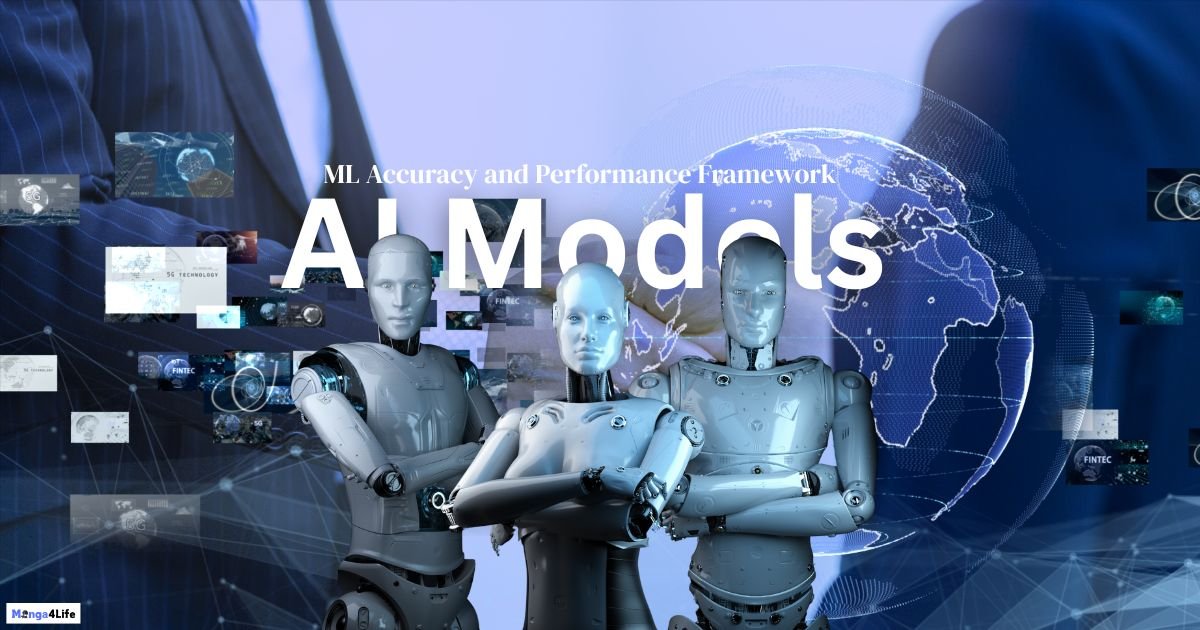Test AI Models: ML Accuracy and Performance Framework

Are you struggling to test AI features that you have implemented within the application? Due to the rising use of artificial intelligence and machine learning, it is becoming very important to have testing frameworks that will help you evaluate the model’s performance and accuracy.
Do not know how to test AI models for accuracy and performance! Don’t worry! We are here for you. Our article will help you understand the major components, methodologies, and best practices to implement performance and accuracy testing of your AI model testing procedure.
We’ll also help you go through some of the most effective tips that will have a critical role in improving the efficiency of this overall procedure.
Why Testing AI Models Is Critical
Since we are trying to define a baseline image about the importance of testing AI, it is only relevant that we begin our discussion with some of the major points to justify the implementation of this process:
Ensuring Real-World Relevance
It is not new that all artificial intelligence models are trained using historical data. But have you thought they are deployed in dynamic and real-world environments? Therefore, this testing process will ensure that these models can perform well not only on test data sets but also under various real-world use cases. This approach will help account for concept drift and evolving data patterns, which the application will see in the coming years.
Mitigating Bias And Ethical Risks
If you’re using poorly tested data systems, it can help reinforce various societal biases, which will influence the accuracy and dependability of the test cases. To remove this process, the testing frameworks will help identify fairness issues and also other discriminatory patterns in predictions to ensure ethical AI deployment.
Building Trust And Accountability
If you are a testing organization, it is very important for you to test AI outputs before relying on them. By using performance and accuracy frameworks, you can build transparency to enable stakeholders to understand how well a model performs and under what circumstances. This approach would also be useful to build a general trust within the organization when you’re initially migrating from traditional testing practices to AI-based software testing.
Read More: Mobile Friendly Test: 8 Tools For Responsive Design
Major Components Of An ML Testing Framework
Let us now divert our attention to some of the major components that are a part of a machine learning testing framework. The further knowledge of these components will help you design your testing procedures accordingly.
Model Accuracy Testing
By using model accuracy testing, you will be able to ensure how closely the model’s predictions match the ground reality, which will be used as the evaluation parameter when the app is deployed in a real-world scenario.
To implement the classification process, it will use metrics like accuracy, precision, recall, and F1 score. On the other hand, to justify the reality of the regression matrix, it will use parameters like mean absolute error, mean squared error, and R2 score.
Performance Evaluation
By using performance evaluation, you can measure the resource efficiency and operational effectiveness of a model. It uses parameters like latency to understand the time taken to produce a prediction. On the other hand, the throughput metrics finds the number of interferences per second along with memory usage and scalability aspects.
Using the scalability metrics can also understand the ability of a model to handle increasing data loads with the update or increasing scope of the application.
Robustness And Stress Testing
Robustness and stress testing is the process of understanding how a model reacts to noise, adversarial attacks, or incomplete data. To understand the accuracy of this process, you have to use various common practices like input perturbation tests, adversarial testing, and boundary case analysis.
Fairness And Bias Testing
To understand the bias in a testing model, you can use various tools and tests, like demographic parity, equal opportunity difference, and disparate impact analysis.
In certain cases, you will see that the AI testing model adopts a black box principle where it does not clearly show its decision making process. During the fairness testing model, you also need to verify these steps to ensure that every decision or action taken by the AI is always justified and backed by enough information.
Explainability And Transparency
As a continuation of the transparency model, you also must implement model expandability to ensure that the stakeholders can understand the predictions. For this process, you have to use approaches like Sharp, LIME, and integrated gradients.
Read More: Vidwud AI: The Best Free Image to Video AI Tool for Creating Talking Photos
Stages of AI Model Testing
Excited about implementing AI model verification within your software testing process? To implement this, you need to follow the following stages and steps that we’ve given below:
- The entire process begins with data validation, as you need to validate the data set for competence, balance, and quality before the training step. In this step, you need to perform tests like missing values, feature drift, label distribution, and outlier specifications.
- The next step involves evaluating the performance on training and validation sets using cross-validation techniques, such as some of the most important techniques that you need to implement in this process, including careful cross-validation, stratified sampling, and early stopping to prevent overfitting.
- The third step in the implementation process is to simulate production like scenarios using holdout test sets on real-world proxy datasets. In this approach, you need to understand the confusion matrix, cost-sensitive metrics, and performance over time to understand the stability of the entire testing framework.
- After the application has been deployed, you need to continuously monitor the model to understand the concept drift, model degradation, alert threshold for anomalies, and user feedback, along with retaining mechanisms. These practices are very important to ensure that they are constantly implementing and improving the accuracy of the AI model.
Common Challenges Of AI In Software Testing
Although artificial intelligence is such an advanced parameter, it also has its own share of challenges when implementing to verify the capabilities of AI frameworks and models. To help you be prepared and avoid all these obstacles, we have mentioned other major challenges below:
Imbalanced Datasets
If you perform a quick analysis of all the problems that you face due to using AI and machine learning, you will quickly realize that most of these problems arise due to the use of imbalanced datasets. So, you can easily solve these errors by using cost-sensitive learning, coverage, precision, recall, tradeoff analysis, and synthetic minority oversampling technique.
Concept Drift
You need to understand that if you train your model on collected data, it is bound that they will degrade over time. To eliminate this process, you must implement regular retraining along with monitoring distribution techniques. These techniques must shift using Kolmogorov-Smirnov tests.
Label Noise
Finally, if you’re using inaccurate labels while you test AI features, you’ll receive underperforming models. To eliminate this problem, you must use data programming or semi-supervised learning. It is also a great idea to implement human-in-the-loop reviews to verify the complex and unique areas of the project.
Also Explore: The Impact of AI Enablement on Customer Service
How To Design A Testing Pipeline
If you’re trying to design a testing pipeline, you must include the following stages to ensure that it is not only comprehensive but also covering all your requirements:
- You must begin the process by defining your testing objectives, including the business scope for the application that you’re working on.
- You should also create artistic metrics when combining multiple parameters, like model versions of your data subsets and performance conditions.
- You must automate all the repetitive testing parameters like data diff detectors, accuracy monitors, and resource benchmarks.
- Finally, it is very important to continuously analyze and visualize the test reports to improve the functioning and accuracy of the existing testing model.
Integrating AI Testing With Cloud Testing
While you are verifying the performance of your AI and machine learning models, it is very important to incorporate real device testing with these parameters. This is because, apart from this advanced technology, you must also have a clear idea about how your software changes its performance when exposed to the physical parameters of a real device.
We have good news for you. When you’re trying to implement AI in software testing, you will have access to various AI-based cloud testing tools like LambdaTest to easily perform the above process.
LambdaTest is an AI-native test orchestration and execution platform that lets you perform manual and automation testing at scale with over 3000+ browsers, OS combinations, and 5000+ real devices.
This platform also has a very important role in helping you with the debugging and troubleshooting steps as well. With it, your test reports will have a lot of videos and screenshots so that you can quickly find the element that caused the error and resolve it.
Future Of AI Model Testing
Based on all the factors that we have discussed above, it might seem that AI model testing has already reached its peak phase. You would be massively mistaken if you assumed so. To further clarify this point, let us divert our attention towards some of the most relevant upcoming features in this segment:
- One of the most anticipated emerging techniques includes using AI agents to automatically generate the tests and edge cases. This approach will help you to improve the speed of the test coverage and also the debugging steps.
- While using a decentralized model, like a healthcare or a mobile device, you can use the testing frameworks to adapt to federated learning setups without accessing the user data directly. This will help retain the user privacy while still improving the accuracy and relevancy of the test cases.
- Finally, various organizations like IEEE and Analyst are working on frameworks for standardized testing in this segment. For example, it can be a very important parameter when you’re working with high-risk AI users like criminal justice and healthcare.
The Bottom Line
All our discussions here can easily help us to conclude that testing AI models is a very important part to build reliable, fair, and high-performing machine learning systems. By using all the steps and strategies that are mentioned above, you’ll be able to create a well-structured accuracy and performance framework to combine metrics, methodologies, and tools to ensure your AI model behaves as intended across multiple environments, user groups, and time.
Apart from the above practices, you must also have a learning approach to test AI models. This approach will ensure that you are quickly indicating all the upcoming features and innovations to provide the best experience to your customers at all instances.




